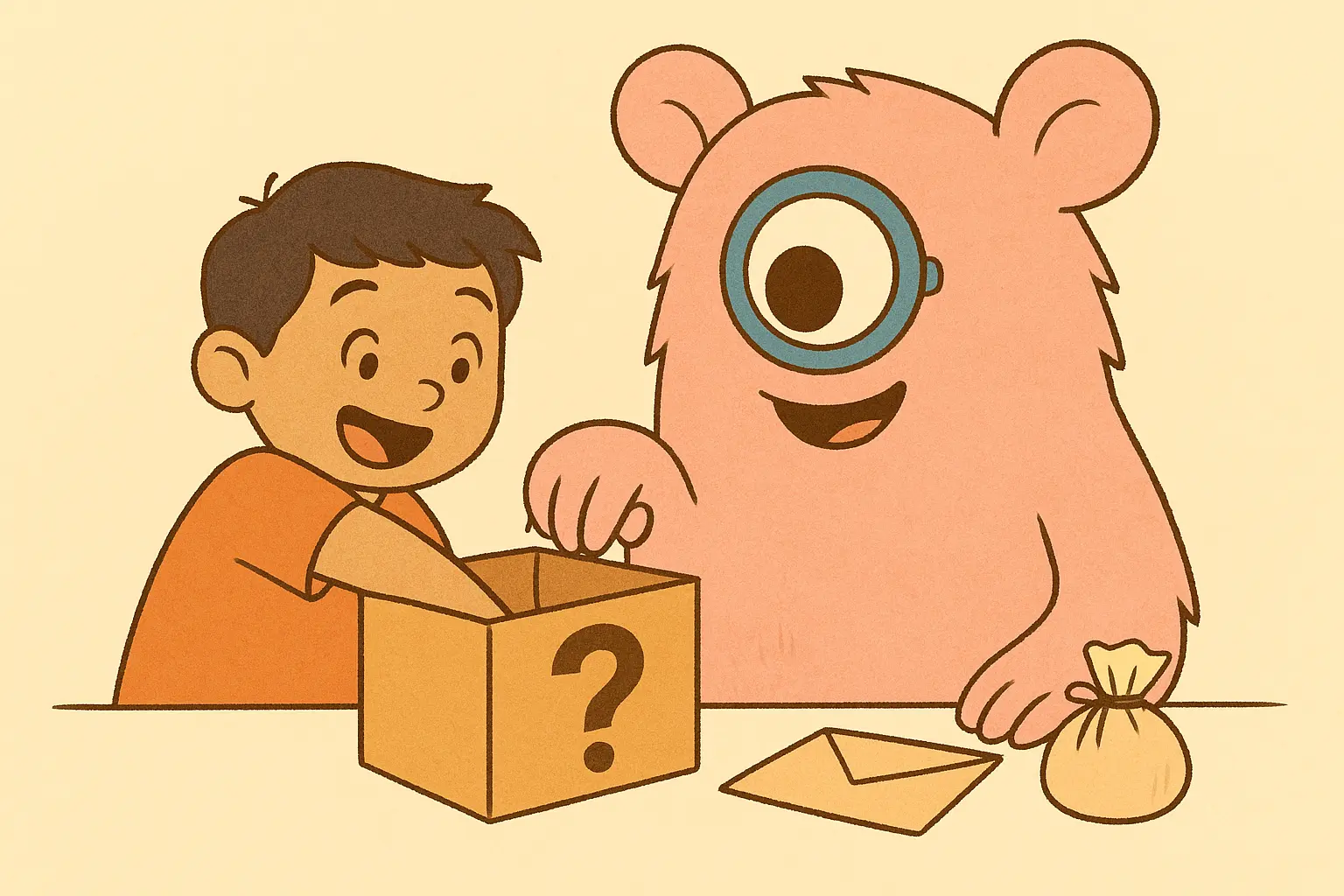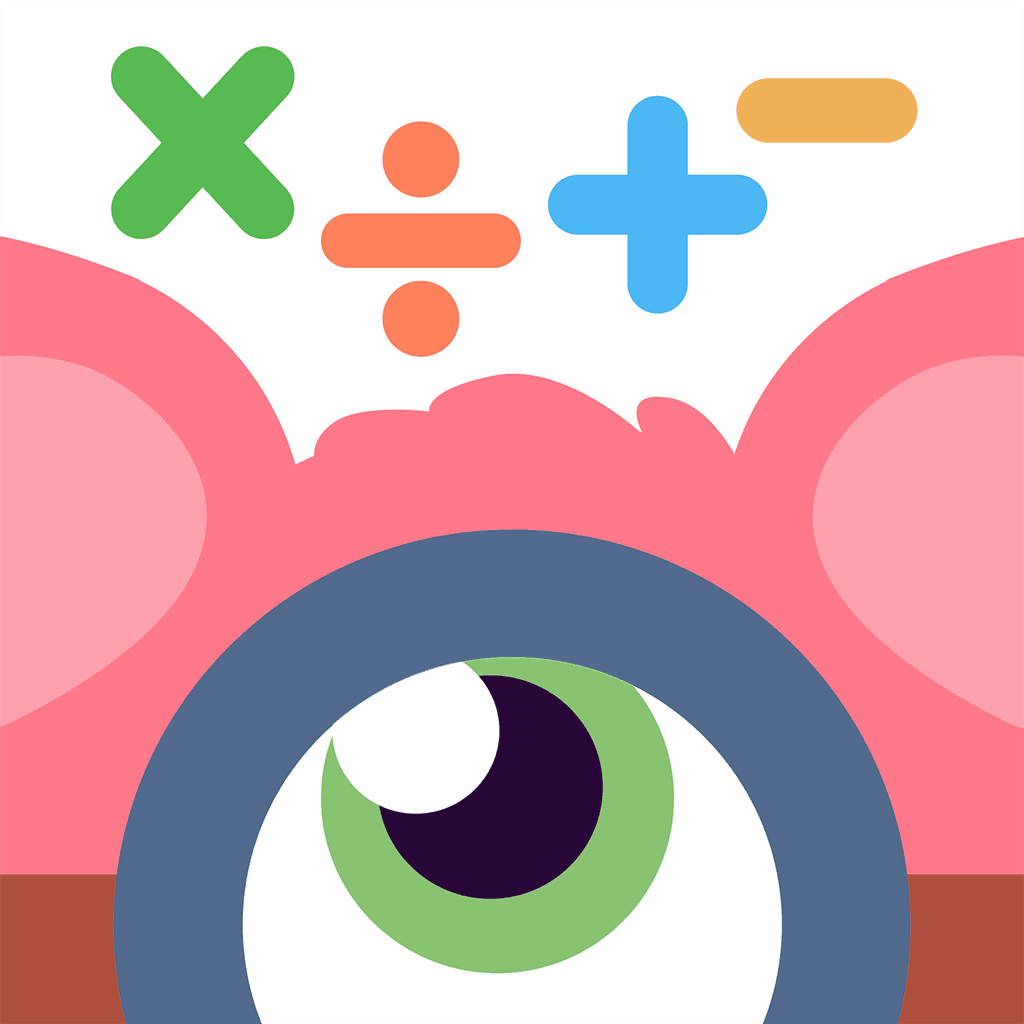5 Reward Systems That Motivate Without Bribing ADHD Kids
TL;DR:Parenting a neurodivergent learner can feel like a balancing act between motivation and bribery. The key is to use structured, positive reward systems that align with how ADHD brains work. Rather than offering last-minute treats to stop meltdowns, these five strategies - from token charts and gamified learning to surprise mystery rewards - build sustained motivation and confidence. You’ll encourage homework and good behavior in a way that feels rewarding (not like a payoff), helping your child develop focus and self-motivation over time.
How Are Rewards Different from Bribery?
Parents of children with ADHD often wonder, “How do I motivate my kid without it feeling like a bribe?” It’s a fair concern - no one wants to raise a child who only cooperates when there’s a prize on the line. The good news is that there’s a big difference between bribery and a well-designed reward system. Bribery is usually a spur-of-the-moment deal (“If you stop screaming, I’ll buy you a toy”) given during misbehavior. In contrast, a reward system is a proactive plan set up beforehand to reinforce positive behaviors. This distinction matters, especially for neurodivergent learners. Kids with ADHD aren’t being manipulative when they chase rewards - their brains genuinely thrive on immediate feedback and incentives due to unique neurochemistry. Research shows that ADHD is linked to strong reinforcement sensitivity and responsiveness to immediate rewards and social reinforcement[3]. In other words, an ADHD brain is wired to seek out quick dopamine boosts - it’s not a lack of character or willpower, but biology. By using reward systems thoughtfully, we’re not spoiling our kids; we’re meeting them where they are and helping them build skills to stay motivated.
Let’s explore five research-backed reward systems that can fire up your ADHD child’s motivation for homework and daily tasks - without veering into bribe territory. Each approach is about consistent structure, immediate feedback, and fun (for the child and you!). Along the way, we’ll see why these methods work well for neurodivergent kids, and how to use them in a positive, sustainable way.

1. Turn Tasks into a Token Economy (Points & Star Charts)
One of the most popular and effective reward systems for kids with ADHD is the classic token economy - think sticker charts, point systems, or “coin” jars. The concept is simple: your child earns tokens for positive behaviors or task completion, which they later trade for a reward or privilege. For example, you might give a star for each homework assignment finished or each time they remember to hang up their backpack, and after earning 10 stars they choose a fun activity or small prize. This approach works wonders because it provides immediate positive feedback (the child sees the star or point right away) while still working toward a bigger goal. Experts note that children with ADHD respond best when rewards are given as soon as possible after the desired behavior[1]. By handing out a token on the spot, you’re essentially saying “Great job, keep it up!” in a tangible way that their brain can latch onto.
Crucially, a token system is not about giving in to demands - it’s about setting clear expectations in advance. You and your child decide together: What behavior earns a token? What are the rewards, and how many tokens do they cost? This upfront structure prevents the feeling of a “bribe” because the child isn’t getting a surprise treat for misbehaving; they’re earning a planned reward for positive efforts. Research in classroom and clinical settings has shown that token economies can significantly improve on-task behavior and productivity for kids with ADHD[1]. For home use, keep the token economy fun and visual. Young kids love seeing their progress, so consider a colorful chart or a clear jar where they drop in tokens. You can even frame it like a game: make a “Math XP” board where each homework problem solved = 1 XP point, and points can be spent on things like 10 minutes of game time or choosing a movie for family night. (As we mention in our ADHD math strategies guide, turning abstract effort into visible progress can actually boost intrinsic motivation!)
2. Gamify Learning and Chores
What if homework itself could feel like a game? Gamification means adding game-like elements (points, levels, challenges, immediate feedback) to non-game activities - and it’s an excellent way to engage an ADHD brain. Rather than purely rewarding the outcome (like a finished worksheet), gamification makes the process of learning or doing chores more fun and rewarding in its own right. For example, you could set a timer and make a “boss fight” out of cleaning up toys (“Can you beat the clock and pick up 10 items before the timer sounds?”), or turn math flashcards into a trivia quiz show with funny sound effects and scores. Many teachers use this strategy in classrooms because it taps into kids’ natural love of play and competition. For ADHD kiddos, the constant stream of feedback in a game - points earned, levels unlocked, badges won - provides that frequent reinforcement their brains crave. Studies on digital interventions suggest that game-based learning content can meaningfully improve motivation and attention in children with ADHD[2].
You don’t need fancy technology to gamify tasks, but there are some great ADHD-friendly learning games out there. Apps like Monster Math and others use adaptive challenges, rewards, and story adventures to keep kids engaged in practicing skills. Our roundup of 5 ADHD-friendly math games highlights how features like instant feedback, level-ups, and creative visuals can turn “boring” math practice into an exciting quest. Whether it’s a digital math game that gives out virtual trophies or a homemade star chart that lets your child “level up” to bigger responsibilities at home, the principle is the same: make it playful. When children are having fun and see their progress in real-time, they’re far more likely to stick with a task. Gamification doesn’t feel like bribery because the child isn’t being promised a separate treat for doing the work - the work has been reframed as the reward.
3. Use Social Rewards: Praise, High-Fives, and Quality Time
Not all rewards have to be toys or screen time. Never underestimate the power of praise and positive attention as a reward for kids - especially those with ADHD. Children with ADHD often struggle with self-esteem and may mostly hear corrections (“Stop that,” “Why can’t you sit still?”) throughout the day. So when you make a big deal of their successes - a high-five, a hug, a “Wow, I’m really proud of how you focused just now!” - it can be incredibly motivating. Research indicates that ADHD children can be especially responsive to social rewards such as smiling faces and encouragement [3]; in one experiment, positive social reinforcement improved task performance for children with ADHD even more than for controls.
The science here comes back to brain chemistry: Recognition and positive social interactions trigger those feel-good neurotransmitters that help motivation. So to leverage this, make praise a consistent part of your reward systems. For example, if you’re using a token chart, don’t just hand over a star in silence - describe what they did right and show excitement (“You started your homework on time - that’s awesome! Here’s a star and a big high-five!”). Some families create a menu of non-tangible rewards that center on quality time or privileges, which can be very meaningful. Completing a weekly goal might earn your child “Special Time with Mom/Dad” (even 15 minutes of undivided playtime), an extra bedtime story, or the power to choose Friday’s family movie. Psychologists emphasize that positive reinforcement like this is often more effective for ADHD behavior change than punishment or nagging[1]. When your child feels proud and appreciated, their internal drive grows.
4. Introduce Mystery and Surprise Rewards
Another creative tool to motivate without outright bribing is the “Mystery Reward” system - essentially, adding an element of surprise or randomness to the rewards your child earns. Kids with ADHD tend to love novelty and suspense, so this technique can really capture their interest. Here’s how it works: instead of your child knowing exactly what reward they’re working toward, you occasionally make it a mystery. For instance, have a grab bag or closed box of small prizes, and when they hit their goal they get to pick one without looking. Or use sealed envelopes with different reward options inside - maybe one envelope says “15 minutes of extra video game time,” another says “Choose a treat,” another says “Skip one chore today.” If the child meets the target behavior (say, completing all homework this week), they get to open a random envelope. The unpredictable “lottery” aspect keeps them on their toes and adds excitement to earning rewards.

Does this really work? Research says yes. Behavior specialists actually have a name for it - the Mystery Motivator intervention - and it’s been tested in schools and homes with great success. A classic school-based study found that a mystery motivator routine led to marked improvements in homework completion and accuracy[4]. More recently, a comprehensive meta-analysis reported a strong overall effect of mystery-motivator-style interventions on challenging behavior and academic outcomes[5]. Why are surprises so effective? Essentially, they harness the power of anticipation. The child knows “something good” is coming if they meet expectations, but the unknown factor keeps it intriguing rather than routine.
5. Empower Your Child with Self-Monitoring and Goals
The last reward “system” is a bit different because it’s as much about internal rewards as external ones. Self-monitoring means having your child actively track their own progress toward a goal, and goal-setting means they help decide on the targets and rewards. In practice, this could look like a simple daily checklist or journal where your child marks each task they finish (“Did I complete my 20 minutes of reading? Yes!”) and maybe rates their effort. At the end of the day or week, you review it together and celebrate milestones. By involving kids in monitoring themselves, you tap into a powerful motivator: their growing sense of accomplishment. One study found that a brief self-monitoring intervention significantly reduced off-task/inattentive behaviors in elementary students with ADHD[6].
To make self-monitoring motivating, tie it to goals and feedback. Maybe your child’s goal is “Finish homework by 5 PM without reminders.” If they track this daily and hit the goal 4 out of 5 days, then a reward is earned. Let them have a say in setting these goals (“Do you think you can do all 5 days? Or should we start with 3 days and work up?”), as well as choosing the reward for success. Research with older students suggests that combining goal-setting with self-monitoring can improve academic performance in those with ADHD[6]. We’ve compiled some goal-setting and self-monitoring hacks in another article, but a few quick ideas: use a chart with boxes your child can tick off (visual progress is rewarding!), create a simple daily report card they fill in (happy face for a good focus day, etc.), or have them put stickers on a calendar for each day they meet a target.
Try one of these reward systems this week and watch small wins add up. When rewards are planned, positive, and consistent, they build skills - not dependency. Start simple, celebrate immediately, and tweak the ratio until your child’s pride outshines the prizes.
FAQs for Parents
Is giving rewards really different from bribery?
Yes - it’s all about timing and intent. A bribe is typically offered in the heat of the moment to stop bad behavior (and can inadvertently reward the misbehavior), whereas a reward is planned in advance to reinforce good behavior. For example, handing your child a lollipop to end a tantrum is a bribe; giving a small reward after they finish their homework, according to a plan, is a positive reinforcement. With a reward system, the child knows ahead of time what the expectations are and what they can earn by meeting them. Especially for kids with ADHD - who often need extra motivation due to neurological “reward deficiencies” - using planned incentives is closer to therapy than bribery[3]. Over time, as good habits form, you can gradually reduce tangible rewards and lean more on praise and intrinsic satisfaction. The goal is to phase out external rewards when they’re no longer needed.
Will reward systems hurt my child’s intrinsic motivation?
Not if used correctly. This is a common worry - that kids will only work for the prize and never develop internal drive. However, research and real-world experience show that the opposite can happen: a good reward system can jump-start intrinsic motivation. The key is to emphasize progress, effort, and pride along with the external reward. The token or treat is just a bonus that initially helped them push through frustration. Over time, as they associate positive feelings with the activity (because they’ve been successful at it), they often become more self-motivated. It’s also important to mix in plenty of praise and meaningful, non-material rewards (like one-on-one time) so that not every accomplishment is tied to “getting stuff.” And as your child matures, you can involve them in setting their own goals and choosing rewards, which gives them a sense of autonomy. (For practical tips, see our section on progress tracking & gamification.)
What if my child starts demanding rewards for everything?
It’s a scenario many of us fear: you ask your child to do something and they shoot back, “What do I get for it?” To prevent this, be strategic with what behaviors you put on a reward plan. Focus on a few key problem areas (like completing homework or morning routines) - things that are truly challenging for your child and need an extra motivational boost. Do not reward every little normal expectation or they might start expecting a payout each time. Also, use a mix of rewards - not always candy or toys. Include social rewards (praise, high-fives), privileges (like choosing dinner or skipping a chore on the weekend), or token accumulations that eventually lead to something. If your child does try the “What will you give me?” line, remind them how the system works: “You have your sticker chart for homework. Not everything needs a prize - some things we do because we’re part of the family.”
How do I adjust the reward system if it stops working?
Even the best system might lose effectiveness after a while - kids get older, interests change, novelty wears off. If you sense that your child is no longer motivated by a particular reward chart or they’re gaming the system, it’s time to refresh and recalibrate. First, involve your child in a check-in: ask them how they feel about the goals and rewards. Common fixes include shortening the reward cycle (e.g., give smaller daily rewards instead of one big weekly one), or swapping in a new reward that your child cares about currently. Also consider the ratio of effort to reward - if it’s too hard to earn anything, kids might give up. Make sure early on they get some “wins” and taste the success. Lastly, keep the element of surprise and fun alive. Add a mystery reward once in a while or throw in bonus tokens for extraordinary effort. By evolving the system as your child grows, you’ll keep them engaged.
References
- Coelho, L. F., Barbosa, D., Rizzutti, S., Muszkat, M., Bueno, O., & Miranda, M. C. (2015). Use of Cognitive Behavioral Therapy and Token Economy to Alleviate Dysfunctional Behavior in Children with Attention-Deficit/Hyperactivity Disorder. Frontiers in Psychiatry, 6:167. https://doi.org/10.3389/fpsyt.2015.00167
- Kim, S. C., Song, J. H., & Kong, N. Y. (2024). Personalized Game-Based Content and Performance: A Pilot Study on a Digital Intervention for Children with ADHD.Bioengineering, 11(12), 1277. PMCID: PMC11673005
- Kohls, G., Herpertz-Dahlmann, B., & Konrad, K. (2009). Hyperresponsiveness to social rewards in children and adolescents with ADHD. Behavioral and Brain Functions, 5(20), 1–11. Article link
- Madaus, M. M. R., Kehle, T. J., Madaus, J., & Bray, M. A. (2003). Mystery Motivator as an Intervention to Promote Homework Completion and Accuracy. School Psychology International, 24(4), 369–377. https://doi.org/10.1177/01430343030244001
- Davis, J. L., King, H. C., Radley, K. C., Corsi, C. M., Jensen, H. J., & Jenson, W. R. (2024). The Mystery Motivator Intervention for Challenging Behavior: A Meta-Analysis. Journal of Positive Behavior Interventions, 26(2), 113–127. https://doi.org/10.1177/10983007231224048
- Mirnasab, M. M., & Bonab, B. G. (2011). Effects of Self-Monitoring Technique on Inattentive Behaviors of Students with ADHD. Iranian Journal of Psychiatry, 6(2), 84–86. PMCID: PMC3395940

Comments
Your comment has been submitted successfully!